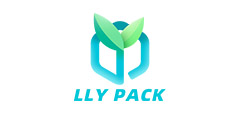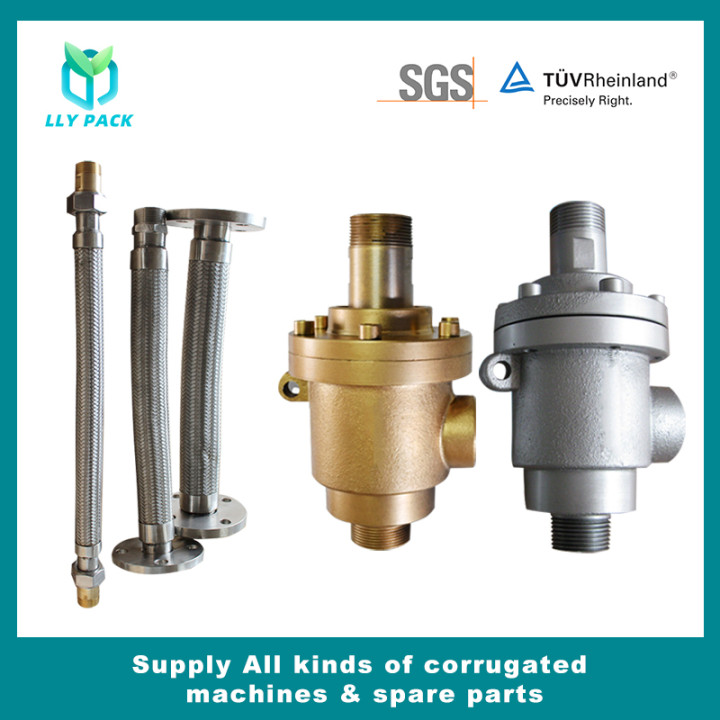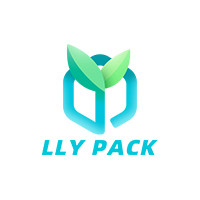Over the years, the printing of corrugated board is merely to apply functional marks on the packaging box of corrugated cardboard, or to simply print in lines and words in monochrome, and the process is backward, inefficient, and costly. With the development of market economy, people's demands for packaging products have been continuously improved. Corrugated cartons and special-shaped corrugated cartons of various colors and designs have emerged, which have not only increased the added value of products, but also increased the competitiveness of products. Adapt to the development of the international packaging market.
Corrugated cardboard structure shown in Figure 1, the inner layer is a special wavy structure, buffering the vibration and enhance the impact ability. It is mainly used in the outer packaging of goods. With the appearance of waterproof corrugated cardboard and reinforced corrugated board, corrugated board can also be made into special liquid packaging containers, which expands the application of corrugated cardboard. With the continuous improvement of flexo printing technology, more and more flexo printing methods are used on corrugated paper. According to statistics, the color printing of corrugated boxes mainly uses flexographic printing technology. The United States accounts for 98%, Western Europe accounts for 85%, China's corrugated board printing area for packaging exceeds 10 billion m2 per year, facing such a huge market. We need to further improve the lack of printing of corrugated paper, improve the quality of printing, and meet the needs of market development in the region.
1. Color printing of corrugated cardboard
1.1 Advantages of Flexo Printing on Corrugated Paperboard
When the corrugated paperboard is using the flexo printing technology, due to the elastic deformation of the flexographic printing plate, it can make up for the errors in the printing thickness and the unevenness of the surface, so that the printing ink color is uniform; the color printing of corrugated cardboard in foreign countries tends to white E-type corrugated cardboard, high grade The number of printing screens is up to 120 lines/in. Both the field version and the cable version can be printed, and four color printing can be realized. The flexo printing is light pressure printing, and the printing pressure is small, and the thickness of the corrugated paper is not uniform. The resulting imprinting or imprinting of the imprint is not true; the sang yin has used water-based ink, so the metal anilox roller can be used to transfer the ink, and the printing plate only needs to gently touch the corrugated cardboard, and the water-based ink is completely absorbed; the structure of the flexo printing machine is simple The four rollers form a color group, which is very convenient for loading, adjusting, and cleaning. The flexographic printing press can also be linked to other processes, such as indentation, slotting, die cutting, gluing, box making, and counting. Linkage production line.
1.2 Color Flexo Printing Process for Corrugated Cardboard
Corrugated cardboard painting process is:
Graphic design → image processing → plate making → printing → die cutting → box making
Manuscript drawings and design and image processing must fully consider the characteristics of corrugated paper, to avoid full-page printing and band-shaped graphics in the same direction as the corrugated file, the text should not be too small, the ink color should be eye-catching, choose strong coloring, high saturation ink The number of screens for coloring pictures is generally 60 lines/in, the number of high-grade prints is 100-120 lines/in, the number of colors is 3-4 colors, there are also 5-6 colors, and only 2% of the dots can be printed. In the separation of color separation, comprehensive consideration of the actual ink parameters, dot gain and other parameters, the preparation of outstanding balance and gray balance procedures, and draw the C, M, Y and BK tone reproduction curve. In addition, we must fully consider the different number of lines, the width of the flexo printer, and the printing slot machine, as well as the influence of different materials and pressures. In the plate making process, a thicker photosensitive resin plate is selected for the flexographic plate, which has a thickness of about 3-7 mm and a hardness of 25-50 Shore Hardness (HS). When the quality of corrugated paper is poor, thicker and lower hardness plates are used. When the quality of corrugated paper is better and small prints and screen printing are required, a plate with a higher hardness is used. When printing with a thick plate, as shown in Fig. 2, the printing pressure is too small, the printing substrate is liable to produce corrugated and "sawboard"-like patterns, affecting the quality of printed matter with high field and screen number; when the printing pressure is too high, printing The substrate is easily deformed and even damaged, causing deformation and dot enlargement of the resin plate. At the same plate thickness and speed, the printing plate with higher hardness has no obvious enlargement of the imprinting, but the imprinting on the edge parallel to the corrugated fiber is less realistic, the soft plate with lower hardness has strong print, but the edge parallel to the corrugated fiber expands. .
The US R/bak air-cushion lining technology is currently used in more pad technology, as shown in Figure 3. It can effectively prevent the deformation of the printing plate and the destruction of the corrugated paper, make the ink layer more uniform, and have better printing tone levels and sharpness. When used, it is only necessary to place the liner containing the microbubbles on the back of the flexographic plate and attach it to the cylinder. During the printing, the air cushion has the function of cushioning pressure and absorbs the printing substrate, the printing plate and the plate roller. The resulting pressure is shown in Figure 4. The dot enlargement caused by excessive or small printing pressure and the deformation and damage of corrugated paper can all be reduced or even eliminated. It also has a unique compensating effect on the oversized plate roll and has good adaptability to various corrugated papers. Sex. Therefore, air-cushion lining technology gradually replaces traditional thick-type printing plates.
The main feature of the flexographic printing press is that the ink path is short, and the anilox roller is the key component of ink transfer and ink distribution. The structure and line number of the ink hole on the anilox roller determine the ink transfer performance and application range of the anilox roller. In the flexo printing of corrugated board, the number of anilox roller lines is often 180-300 lines/in, and the ratio of line number of screen dots to that of anilox rollers is 1:4-1:5. In addition, the majority of corrugated board flexographic printing presses have a drum arrangement in which an impression cylinder is on top and a printing plate cylinder is on the bottom, and the bottom surface of the cardboard is printed so that dust and shredded paper on the printing surface can be naturally dropped.
After the corrugated board is printed, according to the design requirements of various packaging boxes and boxes, the corresponding die-cutting methods and box making equipment are used for die-cutting, and finally the desired products are produced.
2, the factors that affect the ink configuration
2,1 Corrugated board printing ink
Corrugated paper is characterized by rough paper, the surface is not smooth enough, the ink penetration, the surface is mostly dark brown. Therefore, it is required that the basic color of the water-based ink is bright, the coloring power is strong, and the hiding power is high; and the ink has a fast penetration and drying performance; in the printing process, it must have good redissolvability to ensure smooth ink-discharging process; in order to satisfy Packaging requirements, the imprint should also have good abrasion resistance and water resistance.
Corrugated printing inks are mainly made of 5 different materials, including coloring (10-40%), resin or adhesive (20-28%), solvent (33-50%), alkaline Material composition (4-6%) and additives (3-4%). Among them, changes in adhesives and additives play the largest role. As the quality of corrugated packaging increases, the amount of moisture absorbed by the substrate decreases, and it is more dependent on evaporation that resembles the drying principle. After the ink is printed on the substrate, moisture evaporates on the one hand to the surrounding environment and on the other hand it is absorbed by the substrate. The rate of evaporation of water depends on the moisture content, the dehydration characteristics of the binder and the volatility of the water.
2.2 Factors Affecting Ink Configuration
(1) Colorant Colorant is the most expensive component in the ink configuration. The colorant used in corrugated paper printing inks is mainly a basic polymer synthetic pigment, which is characterized by insolubility in adhesive resin paint, low toxicity, and abrasion resistance. Improve the wettability of the pigment. In some cases, the adhesive can also be colored with very transparent pigment chips. The original chrome yellow lead and other heavy metal pigments were gradually replaced.
(2) Adhesives Alkali-soluble resins and disperse-phase resins are two kinds of adhesives that are suitable for corrugated paper printing inks. The alkali soluble resin is cationic, its polymer backbone contains functional carboxylate groups, and the carboxylates react with the basic base to generate water soluble salts. which is
Acid + alkaline binder = salt + water
This reaction is reversible. When the steady pH value decreases, the resin will return to an insoluble state. As shown in Figure 5. The second resin is a disperse phase polymer. The resin particles are controlled by the levitation force generated by the hydrophilic tension. When the steady pH value decreases, this tension dissipates and the resin coalesces. This reaction is non-reversible. Once it is dried, The ink layer is hardly redissolved. From this, it can be seen that his door is suitable for the configuration of corrugated paper inks, containing high solids content and less water, and naturally requiring less water to be removed, thereby accelerating the drying speed.
In order to improve the printing quality of corrugated paper, it is necessary to obtain a good remelting property system, that is, a system capable of realizing self-rewetting during the transmission of anilox and solid ink rollers. This system can be obtained from a low molecular weight alkali soluble polymer with excellent remelting properties. The remeltability of corrugated printing inks is related to the volatility of the base material used, and sodium hydroxide is the best material for this purpose, it is non-volatile and imparts permanent water solubility to the ink. An ink configuration was also performed using monoethanolamine or triethanolamine instead of ammonia in the original ink. Alkali-solubilized polymers allow the wetting of larger pigment particles. With the same color intensity, less dehydration can be achieved with less wet coating, faster drying, and a higher coloring effect. The tone level is clearer.
(3) Additives and other ingredients
Additives account for a small proportion of the configuration, but they can change the properties of the ink, such as the addition of additive polyethylene wax, which can improve the abrasion resistance of prints. In the printing process, corrugated paper ink is prone to foaming in the ink fountain. The foam crawls through the ink fountain and blocks the pipe. It flows onto the three-dimensional ink roller and the substrate and causes printing errors. Therefore, anti-foaming agent and defoaming agent must be added to the corrugated printing ink. Agent, but must pay attention to anti-foaming agent and defoamer can not be excessive, otherwise it will cause printing defects.
The surface tension of the coated paper substrate is 36-42 dyne/cm, the surface tension of water is 72 dyne/cm, and the surface tension of water is much greater than the substrate tension. In order to obtain the flat coating effect, the ink is applied to the ink. Add a surface humectant to reduce the surface tension of the resin or water mixture, but choose a suitable humectant, otherwise, the humectant will cause or contribute to foaming. The surface tension of alcohol is very low, and high quality corrugated printing inks often add a small amount of alcohol to improve the low foam and surface wetting properties, and at the same time help to improve the drying of the ink and benefit the transfer process.
The preparation of corrugated paper inks is a complex balancing process of various materials. The proper configuration of ink components can greatly improve the quality of corrugated board printing.










